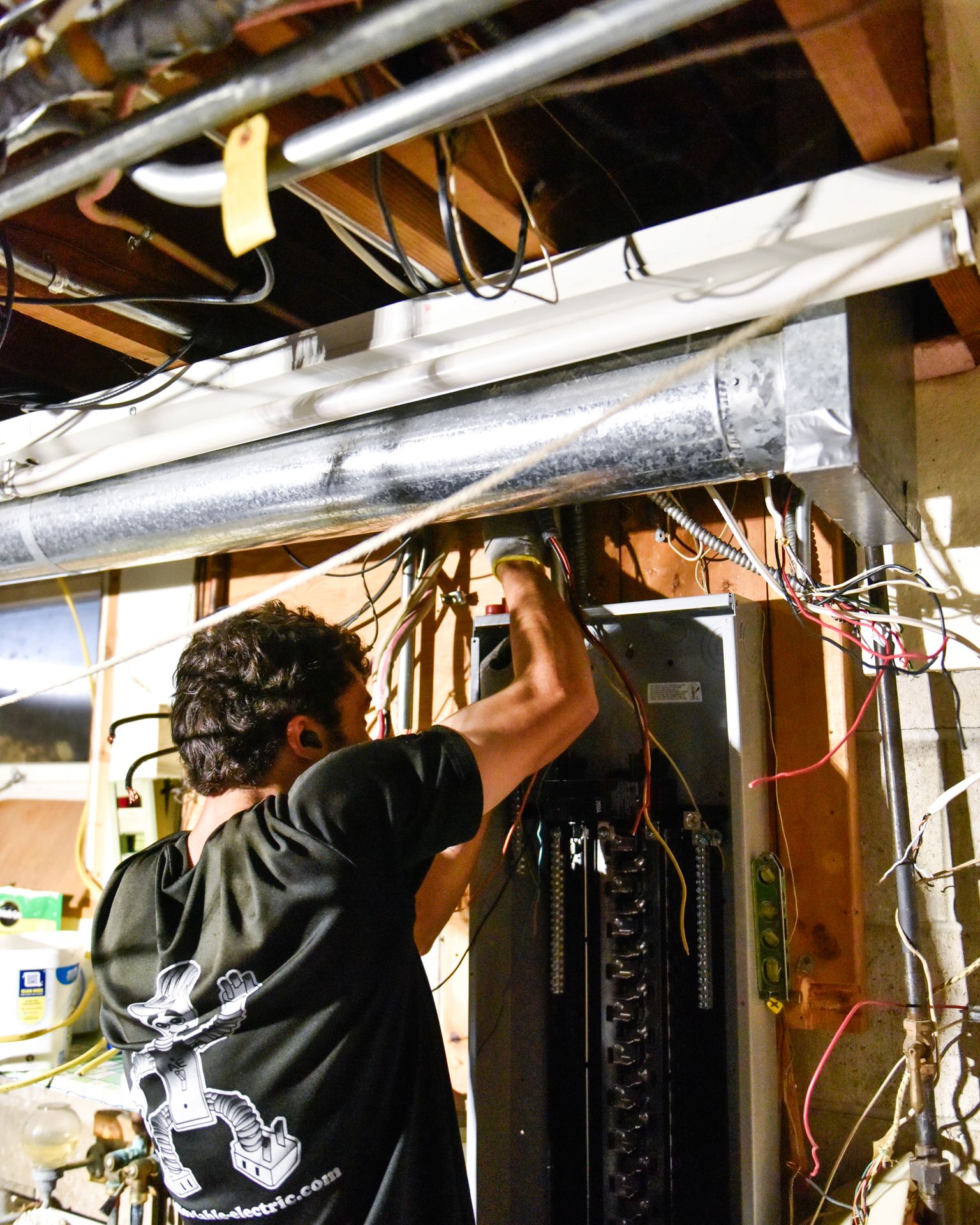
If you’re like most homeowners, you rarely think about your electrical panel—until something goes wrong. But this gray box, usually tucked away in a basement, utility room, or garage, is one of the most important components of your home’s safety and efficiency.
At Affordable Electric, we’ve spent over 30 years helping homeowners across the Twin Cities upgrade aging panels, improve home safety, and support the electrical demands of modern living. Whether you’re dealing with flickering lights or planning a remodel, here’s what you need to know about your electrical panel—and how to tell when it’s time for an upgrade.
Your electrical panel (also known as a breaker box or distribution board) is the central hub that routes electricity throughout your home. It receives power from your utility company and distributes it to individual circuits that power everything from your refrigerator and furnace to outlets and lighting.
The panel also acts as a safety system. If there’s a power surge, short circuit, or overload, the circuit breakers inside the panel are designed to shut off electricity to prevent overheating, fires, or damage to appliances.
But panels don’t last forever. Like any essential system, they can wear down, become outdated, or fail to meet modern electrical codes. That’s when it’s time to consider an electrical panel upgrade.
Most electrical panels have a lifespan of 25 to 40 years, depending on usage, environmental conditions, and the quality of the original installation. However, just because your panel is still functioning doesn’t mean it’s operating safely—or efficiently.
Many homes across Minneapolis and Saint Paul were built before 2000, which means they may still have their original panels. And with today’s growing reliance on high-wattage appliances, smart devices, and home offices, that outdated panel could be struggling behind the scenes.
You don’t have to be an electrician to spot trouble. Here are eight signs your electrical panel may need to be inspected or replaced:
If your home uses screw-in fuses instead of circuit breakers, it’s time to upgrade. Fuses are outdated, can’t be reset like breakers, and are not designed to handle today’s electrical loads. Many insurance companies will not cover homes with fuse boxes due to the fire risk.
An occasional trip is normal, but frequent tripping—especially on the same circuit—means your panel or circuits are overworked. This is often caused by too many high-demand devices on one line, or an undersized panel trying to power too much at once.
If you’re running out of outlets and relying on extension cords or power strips in multiple rooms, it likely means your panel isn’t supplying enough branch circuits for your household’s needs. This isn’t just inconvenient; it can also be dangerous.
Flickering or dimming lights when large appliances start up often indicate your panel is struggling to provide consistent power. This is a classic symptom of voltage drop due to overloaded circuits.
Heat, discoloration, rust, or a burning smell around your panel are all serious red flags. These could point to loose connections, overheating wires, or internal component failure—and should be addressed immediately by a licensed electrician.
Older homes often have 100-amp panels, which were standard decades ago. Today’s homes typically need at least 150–200 amps to support air conditioning, home offices, hot tubs, EV chargers, and modern appliances.
A kitchen remodel, finished basement, new HVAC system, or home addition will all place greater demand on your electrical system. A panel upgrade ensures that your system can safely handle new circuits and appliances while staying code-compliant.
Some older panels, such as Federal Pacific Electric (FPE) or Zinsco, are known to have defective breakers that can fail to trip. These panels have been linked to thousands of home fires and should be replaced, regardless of whether they appear to be working.
When you schedule a panel upgrade with Affordable Electric, here’s what you can expect:
We’ll start with a full inspection of your current panel, circuits, grounding, and usage needs. We assess whether your panel is operating safely, how much capacity is available, and what’s required for future upgrades.
Upgrading a panel requires coordination with your utility company, proper permitting, and code-compliant installation. We handle all of that for you—ensuring the work is inspected and approved.
We remove your existing panel and install a new one, sized for your current and future power demands. New AFCI and GFCI breakers are included as required by the National Electrical Code (NEC), and we ensure proper labeling and surge protection are in place.
Once installed, we test every circuit and connection, confirm proper grounding and bonding, and leave your space clean, safe, and fully powered.
Upgrading your electrical panel is an investment in your home’s safety, functionality, and long-term value. The benefits include:
Plus, a modern panel makes future home upgrades easier and more cost-effective—no more rewiring or creative workarounds.
Upgrading your panel is just one part of creating a safer, more efficient home. Affordable Electric of Twin Cities offers a full range of residential and commercial electrical services to help you power your home with confidence.
Explore our most requested services:
No matter the size of the project, our team delivers licensed, code-compliant workmanship with clear communication and honest pricing.
At Affordable Electric of Twin Cities, we’ve helped thousands of homeowners replace outdated panels, pass inspections, and power their homes with confidence. As a locally owned company serving the Minneapolis–Saint Paul metro since 1989, we bring:
Whether you’re upgrading for safety, convenience, or future growth, our team is here to help you navigate the process with confidence.
Your electrical panel is the foundation of your home’s power system. If you’ve noticed signs of strain or your home hasn’t had an upgrade in decades, now is the time to act.
Call Affordable Electric today at 612-331-8658 or schedule your appointment online. We’ll assess your system, explain your options, and help you power your home safely for the years ahead.